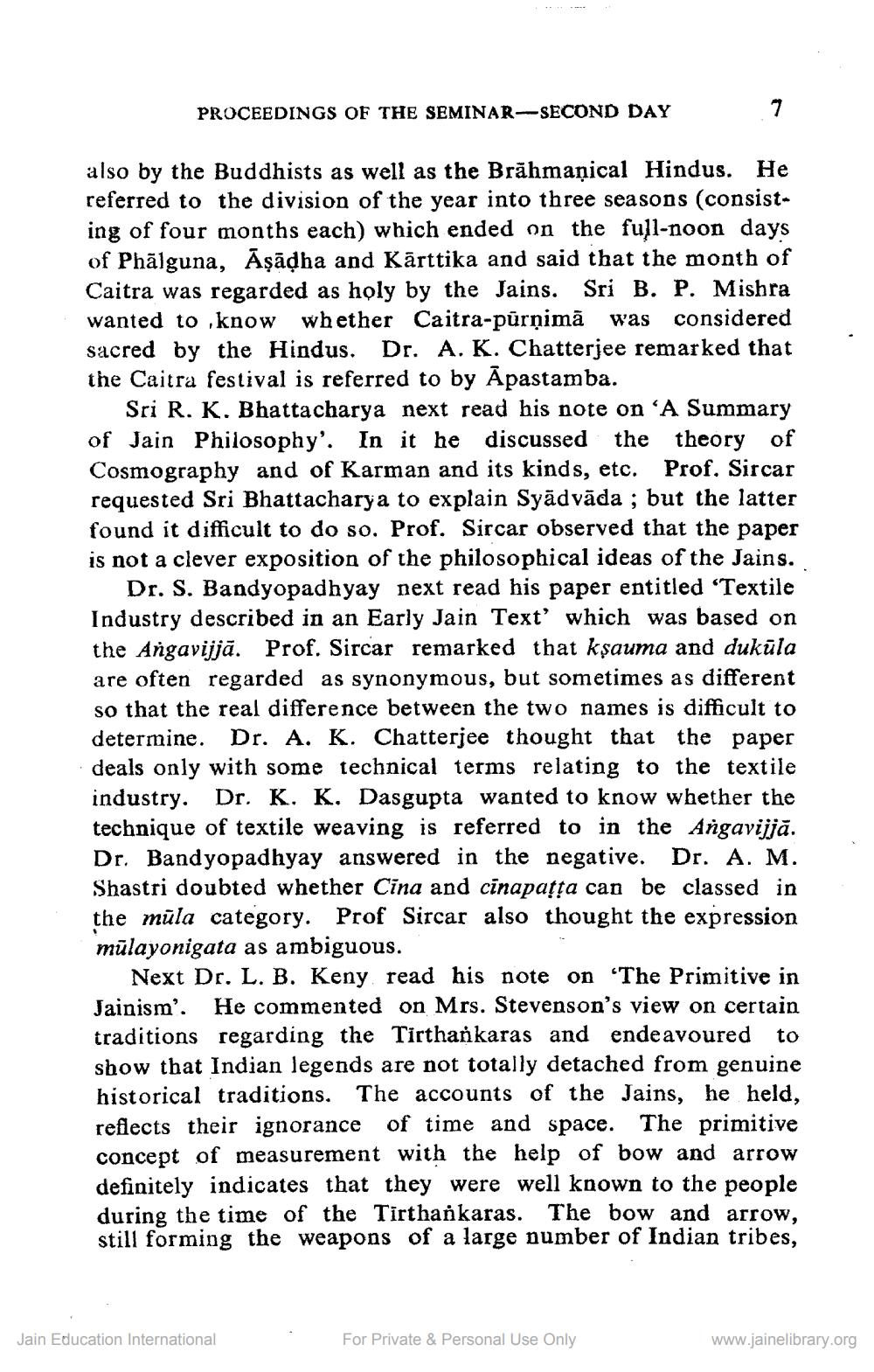________________
PROCEEDINGS OF THE SEMINAR-SECOND DAY
also by the Buddhists as well as the Brāhmaṇical Hindus. He referred to the division of the year into three seasons (consisting of four months each) which ended on the full-noon days of Phālguna, Āsādha and Kārttika and said that the month of Caitra was regarded as holy by the Jains. Sri B. P. Mishra wanted to know whether Caitra-pūrņimā was considered sacred by the Hindus. Dr. A. K. Chatterjee remarked that the Caitra festival is referred to by Apastamba.
Sri R. K. Bhattacharya next read his note on ‘A Summary of Jain Philosophy'. In it he discussed the theory of Cosmography and of Karman and its kinds, etc. Prof. Sircar requested Sri Bhattacharya to explain Syādvāda ; but the latter found it difficult to do so. Prof. Sircar observed that the paper is not a clever exposition of the philosophical ideas of the Jains.
Dr. S. Bandyopadhyay next read his paper entitled 'Textile Industry described in an Early Jain Text' which was based on the Angavijjā. Prof. Sircar remarked that kşauma and dukūla are often regarded as synonymous, but sometimes as different so that the real difference between the two names is difficult to determine. Dr. A. K. Chatterjee thought that the paper deals only with some technical terms relating to the textile industry. Dr. K. K. Dasgupta wanted to know whether the technique of textile weaving is referred to in the Angavijjā. Dr. Bandyopadhyay answered in the negative. Dr. A. M. Shastri doubted whether Cina and cinapațța can be classed in the mūla category. Prof Sircar also thought the expression mūlayonigata as ambiguous.
Next Dr. L. B. Keny, read his note on "The Primitive in Jainism'. He commented on Mrs. Stevenson's view on certain traditions regarding the Tirthankaras and endeavoured to show that Indian legends are not totally detached from genuine historical traditions. The accounts of the Jains, he held, reflects their ignorance of time and space. The primitive concept of measurement with the help of bow and arrow definitely indicates that they were well known to the people during the time of the Tirthankaras. The bow and arrow, still forming the weapons of a large number of Indian tribes,
Jain Education International
For Private & Personal Use Only
www.jainelibrary.org




